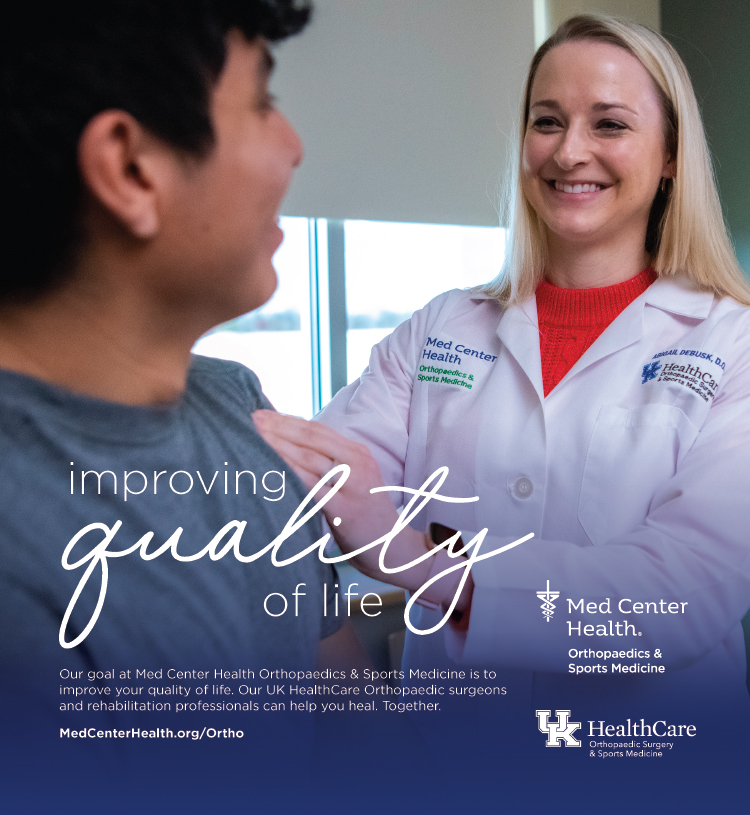
It is estimated that about one in ten people will experience plantar fasciitis during their lifetime. Plantar fasciitis is most commonly found in middle-aged men and women. Each year, more than two million people in the U.S. receive treatment for plantar fasciitis.
“The most common heel pain cause is plantar fasciitis,” said Dr. Chad Willis, Surgeon with Med Center Health Orthopaedics & Sports Medicine. “There are some other causes for heel pain. You can have acute injuries to the calcaneus bone, which is the heel bone, but plantar fasciitis is the most common cause for pain on the very bottom of the heel. Usually, there are no traumas associated with the pain, and the pain tends to be worse for people when they first get up in the morning. After they get out of bed, it typically gets a little bit better, but then it usually flares back up by the end of the day.”
Plantar fasciitis involves inflammation of a thick band of tissue that runs across the bottom of each foot and connects the heel bone to the toes, known as the plantar fascia. Plantar fasciitis commonly causes stabbing pain in the bottom of your foot, near the heel. Certain activities such as running, dancing, and lifting can contribute to the onset of plantar fasciitis.
“An increase in activity can cause more of a heel stretch and lead to acute irritation,” said Dr. Willis. “It can also flare up in people recovering from an illness. If the person hasn’t been up and walking as much, that gives that band of tissue an opportunity to get tight, and when they resume normal activities, they notice pain. There are also some people who experience it without any change in activity. It just pops up out of the blue.”
If you are just beginning to experience the symptoms of plantar fasciitis, Dr. Willis recommends taking anti-inflammatories, starting a regimen of stretching exercises, and possibly purchasing a shoe insert. If you’ve tried over-the-counter medicine and at-home stretching, it may be time to look at physical therapy as an option. Med Center Health offers numerous physical therapy options through Orthopedics Plus Physical Therapy and Bluegrass Outpatient Center.
If any of these other treatment options have not worked, you can speak to an orthopaedic surgeon at Med Center Health about the surgical procedures available that could get you back to living without heel pain.
“Surgically, we can release part of the plantar fascia, and that helps relieve tension on it,” said Dr. Willis. “There are also surgical options that have slightly quicker recovery times. With these options, I can release a muscle in your calf that helps contribute to tension on the plantar fascia. With that procedure, you can weight bear immediately. Around 88% to 92% of patients do very well and don’t have heel pain anymore, and they are able to get back to activities fairly soon.”
To learn more about Med Center Health’s Orthopaedics & Sports Medicine, visit: medcenterhealth.org/ortho.
-submitted by Med Center Health





